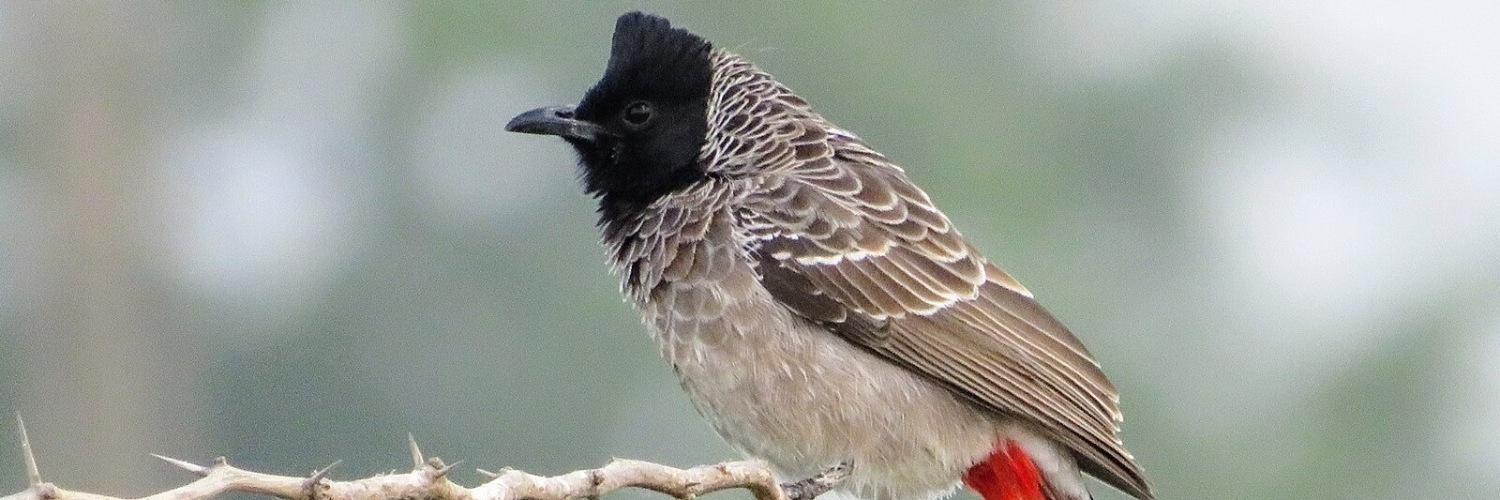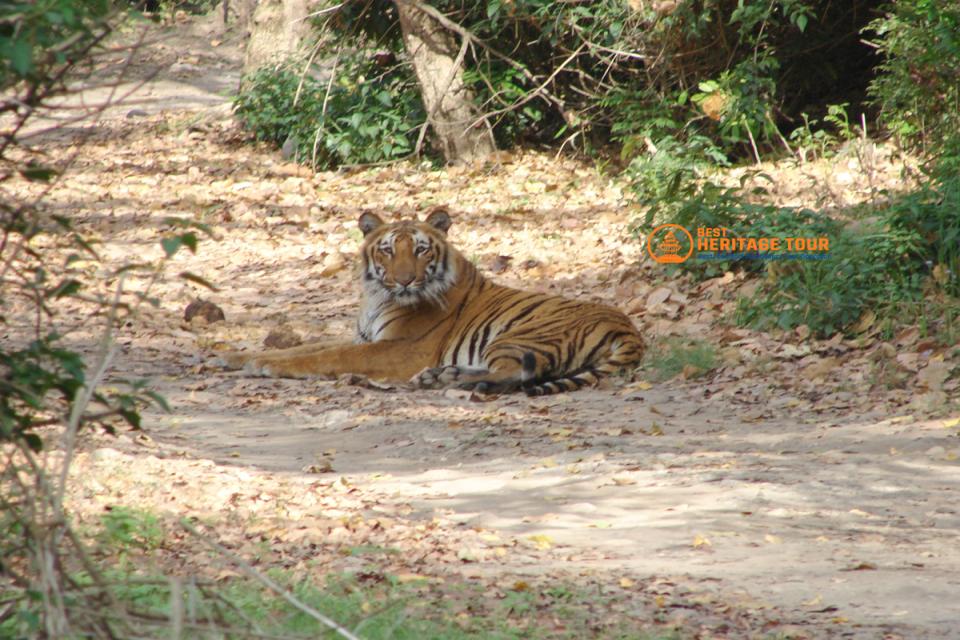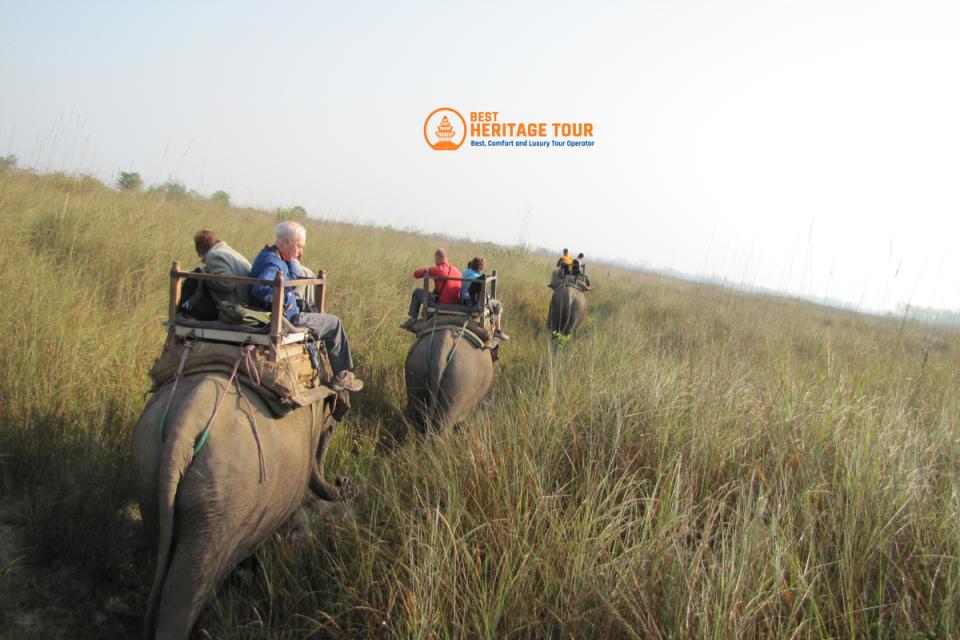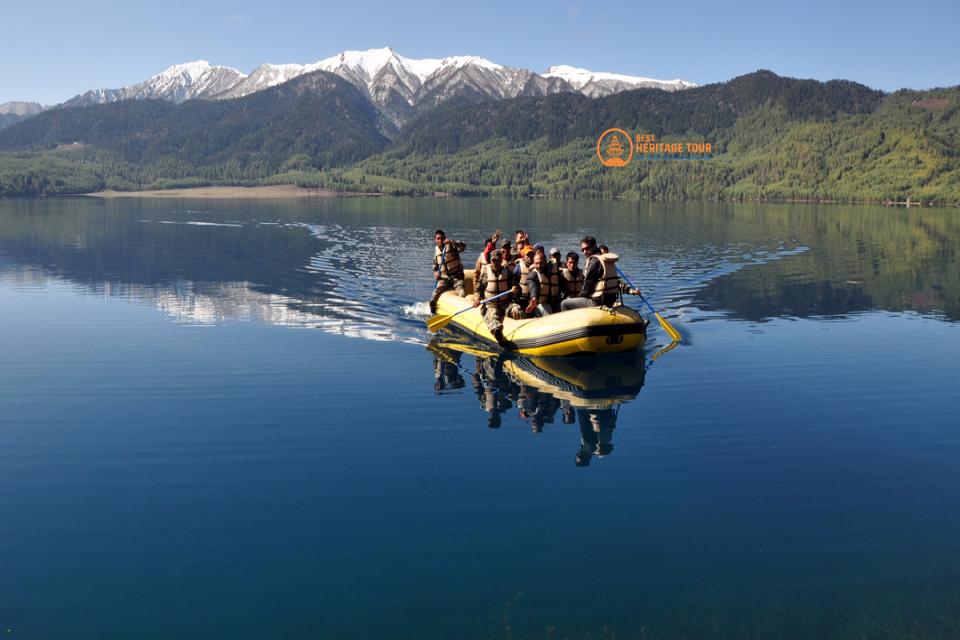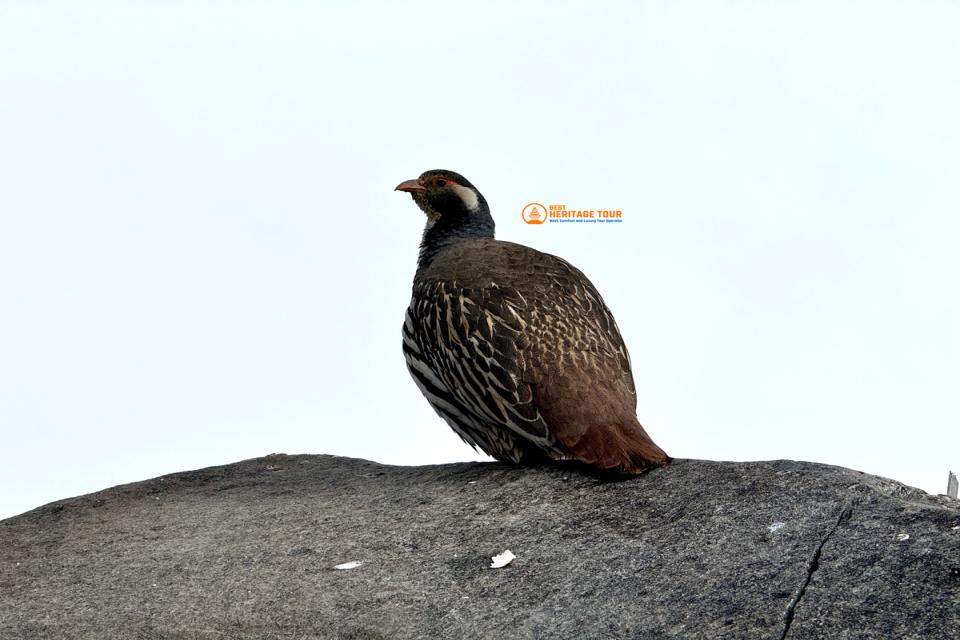Are you passionate about birdwatching and looking to explore one of the world’s most vibrant and diverse birding destinations? Welcome to Nepal, a true paradise for bird enthusiasts in 2025, 2026 and beyond. Whether you’re a seasoned birder or a beginner eager to discover the wonders of avian life, Nepal offers an incredible variety of species across stunning landscapes, from the lowland wetlands to the majestic Himalayas.
Have you ever wondered where the best birdwatching spots in Nepal are? Or what the ideal seasons are for spotting rare and colorful Himalayan bird species? This Nepal birdwatching guide will help you navigate the top birding destinations, including renowned sites like Chitwan National Park and Koshi Tappu bird sanctuary. You’ll learn when to plan your trip for the best bird sightings, including insights on spring bird migration and autumn birdwatching seasons.
Plus, we’ll share expert tips on how to identify Nepali birds, choose the best binoculars, and enjoy ethical birdwatching practices that support conservation efforts. Ready to embark on an unforgettable birdwatching journey? Let’s dive into everything you need to know to make the most of birdwatching in Nepal in 2025 and 2026!
1. Top Birdwatching Destinations in Nepal
When it comes to birdwatching in Nepal, you’re in for a real treat. This small Himalayan nation packs an extraordinary range of habitats, each teeming with avian life. From tropical lowlands to alpine heights, the variety of birding landscapes is as breathtaking as the species that inhabit them. So where should you go first?
Here’s a look at some of the best birdwatching spots in Nepal, each offering a unique birding experience:
i. Chitwan National Park: Birdwatcher’s Dream in the Lowlands
A UNESCO World Heritage Site, Chitwan National Park is not just known for tigers and rhinos, it’s also home to over 540 bird species, making it a premier destination for birders.
What you can expect to see:
- The rare Bengal florican
- Colorful Indian pittas
- Lesser adjutant storks
- Vibrant kingfishers and woodpeckers
Pro tip: Visit during the early morning or late afternoon for the best sightings. Hiring a local guide familiar with Chitwan National Park bird species will greatly enrich your experience.
ii. Koshi Tappu Wildlife Reserve: Nepal’s Wetland Wonderland
Located in the eastern Terai, Koshi Tappu bird sanctuary is one of the best places in Asia for spotting wetland and migratory birds. With over 485 species recorded, it’s a haven for birdwatchers.
Highlights include:
- Black-necked storks and sarus cranes
- Large flocks of ducks and geese during the migratory season
- Excellent chances of seeing rare waders and warblers
Tip: Bring your zoom lens, this is also a hot spot for bird photography in Nepal.
iii. Annapurna Conservation Area: High-Altitude Birding Adventure
Think the Himalayas are just for trekkers? Think again. The Annapurna region offers excellent opportunities to spot high-altitude and forest birds amidst spectacular mountain scenery.
Look out for:
- The striking Himalayan monal (Nepal’s national bird)
- Blood pheasants and snow partridges
- A wide variety of laughing thrushes and sunbirds
Pair your trek with some early morning birding walks, you’ll be amazed by what you discover.
iv. Bardiya National Park: Untouched and Underrated
Fewer tourists venture to Bardiya National Park, which makes it one of the top birding destinations in Nepal for those seeking serenity. With dense sal forests and tranquil riverbanks, it’s perfect for spotting shy and elusive birds.
Birds to spot:
- Bardiya National Park’s rare birds like the white-rumped vulture
- Osprey, crested serpent eagles, and forest-dwelling species
It’s also an excellent place for a combined wildlife and birdwatching itinerary.
v. Birdwatching Close to Kathmandu: Shivapuri National Park and Urban Hotspots
Just north of Kathmandu, Shivapuri National Park offers a peaceful escape with rich bird diversity, perfect for a quick yet rewarding nature experience near the city. Meanwhile, within Kathmandu Valley itself, urban birding surprises await, ideal if you’re short on time or just arriving in Nepal.
Don’t miss:
- The lush forest trails around Shivapuri Peak with Himalayan species like Mrs. Gould’s sunbird and chestnut-headed tesia
- Seasonal migrants and rare birds in Shivapuri’s subtropical and temperate zones
- Godavari Botanical Garden and Phulchowki Hill for colorful birds right inside the valley
- Taudaha Lake, especially in winter, where migratory ducks gather
- Sightings of warblers, eagles, and other urban-friendly species
Between Shivapuri’s natural habitats and the surprising avian variety within Kathmandu Valley, birdwatchers of all levels will find plenty to explore without venturing far from the city.
2. Best Seasons for Birdwatching in Nepal
Timing is everything, especially when it comes to birdwatching. So, what’s the best time for birdwatching in Nepal? That depends on the kind of experience you’re after. Nepal’s diverse climate creates four distinct birding seasons, each offering its own charm, species, and surprises.
Let’s break it down by season so you can plan your trip around the best months for birding in Nepal:
i. Spring (March to May): Migration and Breeding Magic
If you want to witness Nepal’s avian world at its most vibrant, spring is your season.
During this time, birds are actively breeding, and their plumage is at its most colorful. It’s also the peak of the spring bird migration in Nepal, with many species returning from warmer regions.
Birding highlights in spring:
- The stunning Himalayan monal in full display
- Migratory warblers, flycatchers, and cuckoos
- Increased bird activity and vocalizations, perfect for identification
Spring is also ideal for trekking-based birdwatching in places like the Annapurna region.
ii. Autumn (September to November): Crisp Air and Clear Views
Autumn is arguably the best overall season for travel in Nepal and that includes birdwatching.
The monsoon rains have rejuvenated forests and wetlands, and birds are highly visible against clear skies. Many migratory birds also pass through or return during this time, making it a key season for autumn birdwatching in Nepal.
What makes autumn great:
- Excellent visibility in high-altitude areas
- Returning migratory raptors and waders
- Comfortable weather conditions for long birding walks
This season is perfect for pairing birding with cultural exploration or trekking.
iii. Winter (December to February): Migratory Guests from the North
Don’t let the chill fool you, winter birdwatching in Nepal can be incredibly rewarding, especially in the lowlands.
This is when wetlands like Koshi Tappu and Taudaha Lake come alive with flocks of migratory waterfowl from Central Asia and Siberia.
Winter birdwatching perks:
- Spot species like ruddy shelducks, bar-headed geese, and northern lapwings
- Great visibility in the Terai and valley regions
- Fewer crowds and quieter reserves
Pack a warm jacket and head south for a peaceful birding experience.
iv. Monsoon (June to August): Hidden Gems for the Brave
Birdwatching during the monsoon? It’s not for everyone, but if you’re an intrepid birder, it has its rewards.
While rain and humidity make travel challenging, monsoon is the breeding season for many resident birds, and their calls fill the forests. This season also offers unique opportunities for monsoon bird sightings in Nepal.
Monsoon birding tips:
- Explore hill regions like Phulchowki, where birds are more active
- Watch for nesting behaviors and vibrant mating plumage
- Be prepared for leeches, muddy trails, and weather delays
For dedicated birders, it’s a season of discovery.
3. Expert Tips for Birdwatching in Nepal
So, you know where to go and when to go, but how do you make the most of your birdwatching adventure in Nepal? Whether you're a seasoned birder or just starting out, the right approach can transform your trip from a casual stroll into a truly unforgettable wildlife experience.
Here are some tried-and-true expert tips for birdwatching in Nepal, designed to help you spot more species, stay comfortable, and travel responsibly.
i. Hire a Local Birdwatching Guide
One of the smartest moves you can make is hiring an experienced birdwatching guide in Nepal. These guides not only know the trails and habitats but can also identify birds by call and flight pattern, something no app can fully replace.
Why it’s worth it:
- Boosts your chances of spotting rare species like the Bengal florican or sarus crane
- Helps you explore off-the-beaten-path hotspots
- Adds a layer of cultural connection through local knowledge
Tip: Many guides are also connected with bird conservation projects in Nepal, so hiring them helps support local sustainability efforts.
ii. Master the Art of Bird Identification
Ever wondered how to identify Nepali birds with confidence? Start by narrowing your search by region and altitude. The Nepal bird checklist is massive, over 900 species! But your location helps you focus.
Steps to sharpen your ID skills:
- Carry a Nepal-specific field guide or use trusted birding apps like Merlin
- Learn bird calls before your trip, especially for species like laughing thrushes or sunbirds
- Pay attention to size, flight style, habitat, and behavior
Pro tip: Join local birdwatching groups in Kathmandu or Pokhara to get real-time tips and updates.
iii. Invest in the Right Gear
Having the right equipment can elevate your birding game. If you’re unsure where to start, focus on quality binoculars first.
Essentials for birders:
- Best binoculars for birdwatching in Nepal: 8x42 or 10x42 binoculars offer a great balance between clarity and field of view
- A waterproof field journal or app for taking notes
- A DSLR or mirrorless camera with a zoom lens for bird photography in Nepal
- Neutral-colored, moisture-wicking clothing
iv. Practice Ethical Birdwatching
Birdwatching isn’t just about spotting birds. It’s about protecting them, too. Practicing ethical birdwatching in Nepal helps preserve habitats and species for future generations.
How to bird responsibly:
- Stay on trails to avoid damaging nesting sites
- Avoid playback calls or loud noises that disturb birds
- Never feed wild birds
- Choose eco-friendly birdwatching tours that prioritize conservation
v. Plan Your Birding Travel Smartly
Getting to the best birding spots requires more than just showing up. Knowing your options for transport for birdwatching in Nepal can save you time and hassle.
Travel planning tips:
- Domestic flights (e.g., to Nepalgunj for Bardiya or Biratnagar for Koshi Tappu) are often faster than buses
- Jeeps or 4WDs are ideal for parks like Chitwan and Bardiya
- For urban birding, local taxis or short hikes work great
Pair your birding with cultural tours in Nepal for a richer, more immersive travel experience.
4. Sustainable Birdwatching in Nepal: Protecting Nature While You Explore
Have you ever wondered if your birdwatching adventures could positively impact the places and species you love to observe? In Nepal, the answer is a resounding yes. With its rich biodiversity and fragile ecosystems, sustainable travel practices aren’t just a bonus, they’re essential.
Let’s explore how you can become part of the solution through eco-friendly birdwatching in Nepal.
i. Why Sustainable Birdwatching Matters
Nepal is home to over 900 bird species, including many endemics and globally threatened birds. However, habitat loss, climate change, and unsustainable tourism pose serious risks. Practicing sustainable bird tourism in Nepal ensures that your presence helps rather than harms.
By making thoughtful choices, you can:
- Reduce environmental impact
- Support bird conservation projects in Nepal
- Empower local communities economically
ii. Protecting Nepal’s Endangered and Rare Birds
Did you know that species like the spiny babbler, found only in Nepal, or the endangered white-rumped vulture rely heavily on protected areas and responsible eco-tourism?
What you can do to help:
- Visit national parks and reserves like Chitwan, Bardiya, and Koshi Tappu, where conservation is actively practiced
- Avoid disturbing nesting areas, especially during breeding seasons
- Share sightings of rare birds of Nepal with local conservation groups to aid in data collection
iii. Choose Community-Based Lodges and Local Guides
Supporting local communities through birdwatching is one of the most impactful things you can do. When you stay in homestays or eco-lodges and hire local guides, your money stays in the community, and so does the motivation to protect biodiversity.
Tips to travel responsibly:
- Book accommodations that support conservation and use renewable resources
- Eat at local restaurants and buy handmade souvenirs
- Join tours that combine birdwatching and cultural experiences in Nepal
This way, your presence encourages the preservation of both wildlife and local traditions.
iv. Go Light, Travel Smart
Every small action adds up. If you’re conscious about your travel footprint, here’s how to go the extra mile:
Eco-friendly birdwatching habits:
- Carry reusable water bottles and avoid single-use plastics
- Use eBird or other digital logs instead of paper field journals
- Walk or bike when possible, especially for birdwatching in the Kathmandu Valley
These habits don’t just lighten your load, they lighten your impact.
v. Support Conservation Organizations
Several national and grassroots organizations are doing critical work to safeguard birds and their habitats.
Consider contributing to or volunteering with:
- Bird Conservation Nepal (BCN)
- Local initiatives near parks and wetlands
- Youth-led eco-groups working on awareness and habitat restoration
Your time, donations, or even just spreading the word can make a lasting difference.
5. Planning Your Birdwatching Trip in Nepal: Practical Tips and Logistics for 2025/2026
So, you’ve picked your binoculars, charged your camera, and can’t wait to spot a Himalayan monal in the wild, but where do you start? Planning a successful birding journey through Nepal requires more than enthusiasm. You need the right logistics, local insight, and a touch of foresight to make your experience smooth, enjoyable, and rewarding.
Here’s your essential guide to mapping out a seamless Nepal birdwatching itinerary for 2025/2026.
i. When to Go: Best Months for Birding in Nepal
Birdwatching is a year-round activity in Nepal, but some seasons offer richer experiences:
- Spring (March–May): Prime time for the spring bird migration in Nepal. You’ll spot vibrant breeding plumages and songbirds at their most active.
- Autumn (September–November): Arguably the best time for birdwatching in Nepal. Clear skies, migratory arrivals, and comfortable weather make it ideal.
- Winter (December–February): Waterbirds and migratory species are abundant, especially in Koshi Tappu Bird Sanctuary and the Terai wetlands.
- Monsoon (June–August): Less popular due to rain, but excellent for wetland sightings if you're a seasoned birder.
Pro tip: Plan your route based on elevation, valleys offer great sightings in winter, while hilly and alpine areas are active in spring.
ii. Crafting Your Ideal Birdwatching Itinerary
Nepal’s topography offers dramatic shifts in habitat and species diversity. Here’s a sample route to help you get the most out of your trip:
10–14 Day Nepal Birdwatching Itinerary Example:
- Kathmandu Valley (2–3 days): Start light with urban birding and cultural immersion. Shivapuri and Phulchowki hills are hotspots.
- Chitwan National Park (3–4 days): Explore lowland jungles and riverbanks, home to over 500 species.
- Koshi Tappu Wildlife Reserve (2–3 days): Birding paradise for waterfowl and wetland specialists.
- Annapurna Region (optional, 3–4 days): Higher altitude species, rhododendron forests, and stunning vistas.
Customize based on your interests, physical ability, and birding goals. Always leave room for rest, local interaction, and spontaneous discoveries.
iii. Getting Around: Transport Tips for Birdwatchers
Getting from one site to another in Nepal takes planning. Here’s what to know:
- Domestic flights (e.g., Kathmandu to Bharatpur for Chitwan) save time but can be weather-dependent.
- Private jeeps or hired cars are ideal for remote reserves like Koshi Tappu and Bardiya.
- Local buses and shared jeeps are budget-friendly but less predictable.
- Consider booking a birdwatching tour in Nepal 2025 that includes transport, guides, and lodging.
Tip: Check road conditions during monsoon months. Some rural routes may be temporarily inaccessible.
iv. Hiring the Right Guides
To truly elevate your birding experience, consider hiring birdwatching guides in Nepal. Local guides bring:
- Deep knowledge of bird calls, behaviors, and hidden spots
- Access to restricted zones and community forests
- Contextual stories that blend nature and culture
Choose certified naturalists or guides affiliated with conservation groups for the best experience.
v. Where to Stay: Best Lodges for Birders in Nepal
Choosing the right accommodation plays a key role in maximizing your birdwatching experience in Nepal. Opt for lodges and eco-friendly guesthouses that offer early-morning access, close proximity to popular birdwatching spots, and easy trail access. This helps you catch the best bird activity during prime hours.
Look for lodges that promote sustainable bird tourism in Nepal and support local communities and bird conservation projects. Staying at eco-lodges not only enhances your wildlife experience but also contributes to protecting Nepal’s rich bird biodiversity.
From comfortable mountain retreats near the Annapurna region to jungle lodges close to Chitwan and Koshi Tappu, choosing birding-friendly accommodations in Nepal ensures convenience and immersion in nature throughout your trip.
Conclusion
Birdwatching in Nepal in 2025/2026 promises an unforgettable mix of biodiversity, scenic beauty, and cultural depth. From the wetlands of Koshi Tappu Bird Sanctuary to the subtropical forests of Chitwan National Park, the country offers some of the best birdwatching spots in Nepal. With over 900 species, including many rare and migratory birds, it's a dream destination for both beginners and seasoned birders.
Planning your birding adventure with care, choosing the best time for birdwatching in Nepal, hiring local guides, and staying at eco-friendly lodges makes all the difference. Not only will you spot more species, but you'll also support sustainable bird tourism in Nepal and help protect endangered birds and their habitats.
Whether you're after the Himalayan monal, waterfowl in the Terai, or vibrant songbirds in the mid-hills, Nepal delivers rich rewards. So grab your binoculars and start crafting your Nepal birdwatching itinerary for 2025, because few places connect nature, culture, and conservation so seamlessly.
Ready to start your journey? Let Best Heritage Tour craft your personalized Nepal birdwatching itinerary for 2025/2026, complete with expert guides, prime birding locations, and ethical travel practices. Contact us today and take the first step toward an inspiring adventure in Nepal’s birding paradise!
Contact Us Today for Bookings & Information:
-
Phone/WhatsApp/Viber: +9779851149197 / +9779810043046
-
Email: bestheritagetour@gmail.com / info@bestheritagetour.com
-
Website: www.bestheritagetour.com
-
Location: Thamel Marg, Kathmandu, Nepal
Author: Best Heritage Tour
Date: 27th May, 2025

